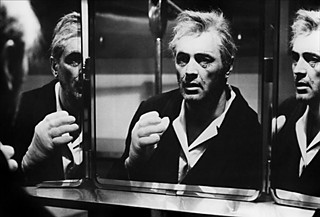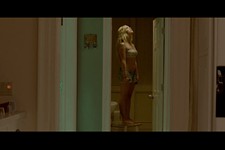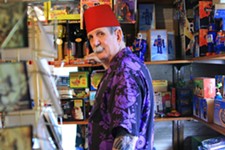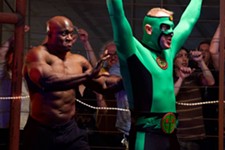Going Back for 'Seconds'
Cinema Club and Wiley Wiggins revive a Sixties thriller
By Marc Savlov, Fri., Nov. 25, 2011
I first saw John Frankenheimer's Seconds on a highly duped VHS tape a friend loaned me back in the mid-1980s. I remember he told me "it was right up my alley." It turned out he knew me better than I thought he did. It's a hallucinatory nightmare alley, with queasy, decadent angles and a sick neon light at the end of it. You get the feeling, watching Frankenheimer's remarkable film, that Rod Serling's Twilight Zone is maybe one block over. (He had, indeed, directed several of Serling's sucker-punch scripts – The Comedian and A Town Has Turned to Dust – for CBS television's famed Playhouse 90.)
Seconds, the subject of the Alamo Drafthouse and guest programmer Wiley Wiggins' upcoming Cinema Club, is the story of Arthur Hamilton (John Randolph), an aging, frustrated suit-and-tie guy who, in a very Serling-esque touch, is given the chance to retire his old, broken-down body and assume a new, more youthful (and presumably less angst-ridden) physique. This is done by a shadowy group known only as the Company, and soon enough Arthur Hamilton is no more. In his place (and with his consciousness) is strapping young Rock Hudson's Tony Wilson. However, Mr. Hamilton/Wilson's problems have only just begun.
"Seconds is interesting to me," says Wiggins, "because it's a movie that could have just been an extra-long Twilight Zone episode, but it has some really amazing stylistic flourishes that make it stand out, even against other Frankenheimer movies of the same period. I've always found The Manchurian Candidate to be a little stagey and flat.
"Seconds stands out for me, though. In particular, James Wong Howe's camerawork is really unusual for the time, and the [Jerry Goldsmith] score is especially haunting. Stars of the Lid sampled it pretty heavily for their album The Tired Sounds of Stars of the Lid. The closing scene, with its spare piano strikes, would be iconic if more people were familiar with the film."
Released in October 1966, Seconds was a commercial flop but a personal triumph – not only for the director, who was just emerging from dramatic television's golden age (alongside fellow director Sidney Lumet and writers Paddy Chayefsky, Horton Foote, and Serling), but also for Hudson, who was no longer quite the Sirkian Adonis or the witty romantic lead of Pillow Talk. Hudson flexes his acting chops here, and the result is the most memorable and unnerving performance of his career.
It helps that Frankenheimer's director of photography, Howe (Sweet Smell of Success), employed various and sundry camera tricks – some made up right on the spot – to imbue Seconds with its anxious tone and decidedly nontraditional look. Fish-eye lenses, extremely wide lenses, and successively stranger imagery throughout (check out Saul Bass' disorienting title sequence) bode well for none of the characters here.
"I think the best thing that the movie has to offer audiences now isn't anything obvious relating to the plot, but how fresh it seems stylistically compared to so many movies now," adds Wiggins. "There's something very intimate and restrained about this movie that is unexpected and that no studio would allow in a genre film now, if indeed there still are any films that aren't explicitly genre films now."
Wiley Wiggins will introduce John Frankenheimer's Seconds and lead a post-film discussion on Sunday, Nov. 27, 7pm, at the Alamo Drafthouse at the Ritz.












